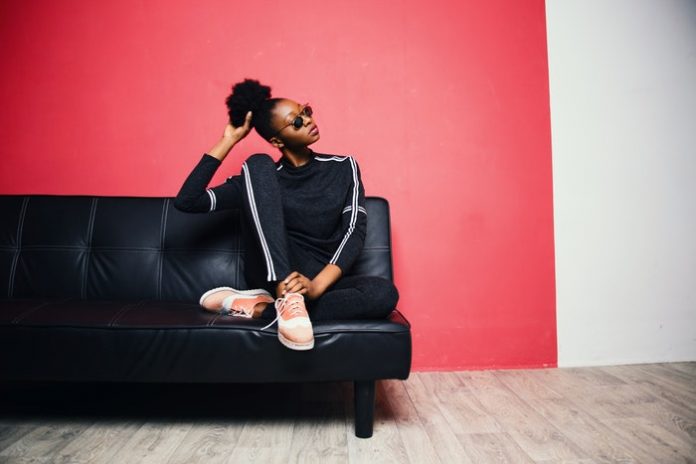By researching colors, you can start to comprehend what they do for a room. Bear in mind that colors have an emotional benefit. Colors function in various ways and are open-minded, submissive, and zestful. If you need help in deciding which colors to choose, research websites, blogs, decorating books, and magazines.
Dark colors are charming and passionate; they make bigger rooms appear more romantic while brighter tones and colors are embracing and breezy. Consequently, you can complement each room’s colors to your particular passion.
Creating That Special Emotional Feeling & Understanding the Right Colors to Choose
As suggested, tile, furniture, rugs, and fabric don’t present as many color choices, so it’s best to gather them beforehand and then choose your paint color. You don’t have to spend a lot of money when purchasing your paint; it changes the mood of your rooms very quickly, so don’t be afraid to experiment a bit.
Red
Writer Tonya Lee suggests red signifies high energy, passion, and romance. Red is an ideal color for the bedroom; it’s noted to stir the emotions, spark conversations, increase the appetite, the heart rate and blood pressure.
Homeedit states red is an ideal color for the dining room because it’s noted to increase hunger — take Burger King and Pizza Hut for example.
Blue
Another ideal color for the bedroom is blue. Blue is known for having a calming and relaxing effect on the emotions. What better place to retire from the stress of the day than a blue-colored bedroom?
Yellow
Experts say yellow is known for cleansing the body and arousing the nervous system. Scientific research has revealed that people seem to exhibit anger and infants cry more in rooms with a yellow interior. It seems as if yellow is not a wise choice as a foundational color.
On the flip side, yellow evokes the emotions of being welcomed, so using it in places such as limited spaces and hallways are fine. Yellow is a wonderful color to use in bathrooms, dining rooms, and kitchens, because it conveys a message of pleasure and sunshine.
Green
Human psychological behavior is often associated with inspirational significance, personal background, and the density of colors. Commonly green is noted as being serene, invigorating and associated with nature. People often think of a very rich green forest.
Other scientific facts about green include:
- Calming effect
- Used in T.V. in waiting rooms for people to relax
- Symbol of fertility & sex
- Increased reading speed and understanding
- People who work in a green area experience less sickness
You may want to use green inside your study area and your personal workout space.
Brown
Brown is lively, has security characteristics and should not be overused. Brown can signify the earth if it’s a light tone or wood when it’s darker. In the Asian culture, according to feng shui, all colors relate to a feng shui component.
According to scientific data, brown was the second choice for males and females as the color for their living room and the second best choice for their bedrooms.
In marketing, brown signifies reliability.
Purple
Purple is a symbol of romance and wealth. Purple is very scarce and unnatural in the realm of home decorating, so it’s best to blend in slight greens or yellows.
Gold
Gold is seen as a symbol of male energy and the strength of the sun in comparison to silver, which is noted as feminine and has the energy of the moon.
The mental characteristics of gold strongly suggest wisdom, understanding, spirituality, luxury, an abundance of material assets, prosperity, class, gain, prominence, status, and success.
It would seem fitting for a C-Level executive to have his or her office walls painted or wallpapered with gold.
White
Resting assured your bathroom is very tidy is a good feeling. You never want stains or dirty spots to be hidden from your eyes; white makes it much easier to spot dirt and keep the bathroom nice and clean.
Blue with White Trim
Having a white external surface with a nice blue trim for a summer home creates a nice and relaxed feeling.
Pink
Another way to implement color psychology in your home is by using pink. Many sports teams have their locker rooms painted pink because it’s known to decrease energy.
A pink room can work wonders for relaxation or for a time of meditation. Pink evokes emotions of peace and tranquility.
Orange
The psychological effects of orange include the increase of energy and improved breathing. Orange is an ideal color for individuals combating asthma or for those who like to exercise.
Gray
You can use gray to make a room feel larger. Gray is a neutral color; when used properly, you can create a refined and classic theme for your home or office.
When gray or other neutral colors aren’t used properly in decorating, you may create a hollow feeling within that space.
Black
When your teen desires to paint his or her bedroom black, they may try to get a nighttime scene in the bedroom. Black is known to give the feeling of a cramped space.
Color psychology plays an important role in home decorating.
Find a Home-Based Business to Start-Up >>> Hundreds of Business Listings.
















































